#large scale systems museum
Text



General Instrument rebranded Digital Computer Controls D-116/17
This clone of a Nova 1200 came out of a supermarket and has a number of 60 channel I/O cards in order to talk to all of the cash registers and scanners and check against the product pricing database. This is an incredibly decked-out system.
Large Scale Systems Museum (LSSM) - mact.io - Pittsburgh, PA
#lssm#large scale systems museum#nova#digital computer controls#d-116/17#general instrument#im sorry to whomever comes looking for information about this#and finds this aesthetic post
87 notes
·
View notes
Text

The prototype B-52s scrapped after First Lady Lady Bird Johnson’s ‘beautification’ of the US Air Force Museum
The B-52 Stratofortress
For more than 60 years, B-52 Stratofortress bombers have been the backbone of the strategic bomber force for the United States. The B-52 is capable of dropping or launching the widest array of weapons in the US inventory. This includes gravity bombs, cluster bombs, precision guided missiles and joint direct attack munitions. Updated with modern technology, the B-52 is capable of delivering the full complement of joint developed weapons and will continue into the 21st century as an important element of our nation’s defenses. The Air Force currently expects to operate B-52s through 2050.
The B-52A first flew in 1954, and the B model entered service in 1955. A total of 744 B-52s were built, with the last, a B-52H, delivered in October 1962. The first of 102 B-52H’s was delivered to Strategic Air Command in May 1961.
The prototype B-52s scrapped after First Lady Lady Bird Johnson’s ‘beautification’ of the US Air Force Museum: The story of the XB-52 and YB-52

The winning design
As explained by Scott Lowther in his book Boeing B-47 Stratojet & B-52 Stratofortress Origins and Evolution, the winning design for the XB-52, Model 464-49, transitioned to Model 464-67. While largely the same, there were some notable differences, most obviously the extension of the forward fuselage. Where 464-49 had the rear of the cockpit canopy behind the leading edge of the wing roots, 464-67 put the cockpit well ahead of the wing. The relatively vast expanse of spoilers on the wings were scaled down and the engine nacelles were reshaped. With those changes and an Air Force ‘letter of intent’ for B-52 tooling in March 1951, Boeing was ready to begin constructing two Model 464-67s.
The prototype B-52s

These prototype B-52s were given the designations XB-52 and YB-52… X for ‘experimental’ and Y being the designation for ‘prototype.’ Typically an `experimental’ aircraft is built before a ‘prototype’, but in this case while the XB-52 (serial number 49- 230) rolled out on Nov. 29, 1951, and the YB-52 (serial number 49-231) followed on Mar. 15, 1952, the YB-52 flew first on Apr. 15, 1952. This was due to the XB-52 suffering damage during pneumatic system pressurization testing which required extensive repairs.
The prototype B-52s scrapped after First Lady Lady Bird Johnson’s ‘beautification’ of the US Air Force Museum: The story of the XB-52 and YB-52
The XB-52 followed the prototype into the air on Oct. 2, 1952. The first flight of the YB-52 lasted two hours and was powered by prototype YJ57-P-3 engines. Despite the difference in designations, the XB-52 and the YB-52 were essentially identical.
The prototype B-52s were largely similar to the production aircraft in appearance. An immediately distinguishing feature of both aircraft, though, was the cockpit. A tandem fighter-style canopy somewhat similar to that used on the B-47 was employed; it was low-drag and gave the pilot excellent visibility.
Pioneering the landing gear layout
The prototypes pioneered the landing gear layout that the rest of the B-52 fleet would employ. Somewhat similar at first glance to the bicycle arrangement used by the B-47, the gear used by the B-52 was quite different. Four separate dual-wheel bogies were stored within the B-52 fuselage, but instead of deploying straight down they deployed out to the sides, twisting around so that the bogies stored fore-and-aft ended up side-by-side. This gave the B-52 not a bicycle arrangement, but a quadricycle. The B-52 would comfortably sit level on its main landing gear and not tip to one side or the other. It still employed smaller outrigger gear near the wingtips, but this was to keep the wingtips from striking the ground during heavily laden takeoffs or bumpy landings.
‘Crabbing’ into the wind
Additionally, the forward bogies could rotate up to 20° side to side, allowing the B-52 to do something unique: land while ‘crabbing’ into the wind, the fuselage of the aircraft pointed well off the axis of the groundpath of the flight. This would permit safe landings in high winds.
The prototype B-52s scrapped after First Lady Lady Bird Johnson’s ‘beautification’ of the US Air Force Museum: The story of the XB-52 and YB-52

The prototypes had flapperons, ailerons and spoilers on the main wings. The ailerons were relatively small and located far from the wingtip; in fact, just outboard of the inboard engine pylon. A wingtip location for the ailerons would have given them more authority, but that would have put them in a much thinner section of the wing, a section much given to flexing. The inboard location was sufficient for the manoeuvring that the bomber was expected to perform.
Folding vertical fin
In any event, the spoilers were to take care of the bulk of the control needs of the aircraft, and the ailerons would eventually find themselves redundant. Unlike the production aircraft that followed, the prototypes did not have the capability for inflight refuelling. Neither did they, initially, have the external fuel tanks that generally graced the outer wings of production model B-52s, but such tanks were eventually added later in the testing phase.

B-52H print
This print is available in multiple sizes from AircraftProfilePrints.com – CLICK HERE TO GET YOURS. B-52H Stratofortress 2nd BW, 20th BS, LA/60-0008 “Lucky Lady IV”.
The horizontal stabilizers were all-moving, but this was meant for trim stabilization. Actual control was via slim elevators along the trailing edge. The elevators had, through the B-52F, trim tabs. An important but rarely noted feature not only of the prototype B-52s but of all B-52s that followed was the folding vertical fin. The fin was, at least until the G-model, a vast structure; too tall by far to allow the B-52 to fit within standard hangars. So it could fold over 90-degrees, greatly reducing the effective height of the aircraft. Unlike naval aircraft with wings that fold to fit in the limited space on board aircraft carriers, the fielding fin is not a self-contained system — an external crane is needed to lay it over and raise it back up again.
Prototype B-52s were hand-made
The prototypes were essentially hand-made at the Boeing Seattle factory. Production methods were not used as the jigs were not finalized; the equipment and instruments employed were also often not what would become standard. Neither prototype was fitted with defensive weapons; the tail turrets were represented by static fairings, with the painted-on lines.
The YB-52 was donated to the US Air Force Museum on Jan. 27, 1958, having flown for 783 hours. It was on display for a time but due to a ‘beautification’ scheme orchestrated by First Lady Lady Bird Johnson, both the XB-52 and YB-52 were scrapped sometime in the 1960s. Exactly how the official museum of the United States Air Force was ‘beautified’ by converting one of the most beautiful aircraft ever built into razor blades and soda cans is not adequately explained in the available literature.
Boeing B-47 Stratojet & B-52 Stratofortress Origins and Evolution is published by Mortons Books and is available to order here.
Photo credit: U.S. Air Force

B-52 Model
This model is available from AirModels – CLICK HERE TO GET YOURS.
Dario Leone
Dario Leone is an aviation, defense and military writer. He is the Founder and Editor of “The Aviation Geek Club” one of the world’s most read military aviation blogs. His writing has appeared in The National Interest and other news media. He has reported from Europe and flown Super Puma and Cougar helicopters with the Swiss Air Force.
@kadonkey via X
56 notes
·
View notes
Text

Sarah Meyohas, “Interference #19”, 2023, Holograms, mirrored black glass, aluminum
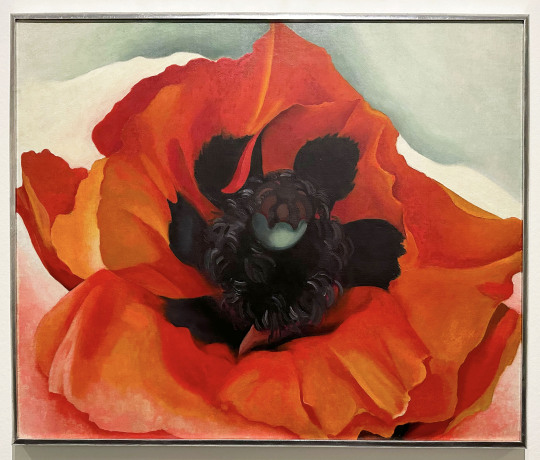
Georgia O’Keeffe, “Poppy”, 1927, Oil on canvas
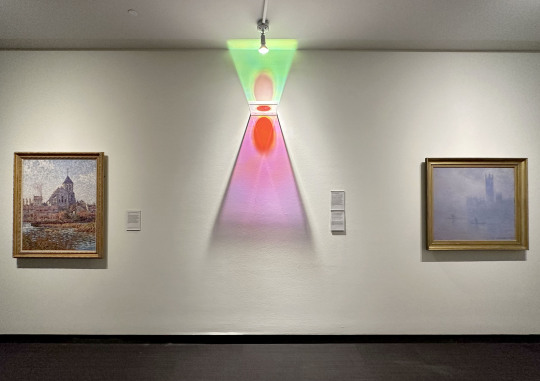

Francis Picabia “The Church of Montigny, Effect of Sunlight” 1908, Oil on canvas (left); Christian Sampson “Projection Painting”, 2023, Acrylic and films with LED light; and Claude Monet “The Houses of Parliament, Effect of Fog, London” 1904, Oil on canvas (right)
The Nature of Art exhibition at the Museum of Fine Arts St. Petersburg merges art from the museum’s collection with loaned works to explore- “art’s crucial role in our evolving quest to understand our relationship with nature and our place in the cosmos”.
One of the benefits of an encyclopedic museum is that visitors have the opportunity to experience art throughout history, and to revisit works that resonate with them. For the section titled Artist as Curator, Sarah Meyohas and Christian Sampson chose pieces from the museum’s collection to pair with their own work.
From the museum-
At first glance, perhaps, these may seem like unusual combinations, but upon deeper contemplation, their selections reveal complementary artistic intents. For instance, Meyohas and Georgia O’Keeffe share an interest in close looking, particularly in finding new ways to examine underappreciated aspects of the natural world. Sampson, influenced by the California Light and Space Movement, is interested in current scholarship that suggests the hazy fog found in Claude Monet’s work is an early depiction of air pollution, offering an entirely new perspective on the artist’s representations of light.
Sampson also created the four-part installation, Tempus volat, hora fugit, on view until 2025 at the museum.
Below are some of the works from additional sections of the exhibition.


Postcommodity, “kinaypikowiyâs”, 2021, Four 30.5-metre industrial debris booms
Postcommodity is an interdisciplinary art collective comprised of Cristóbal Martínez (Genizaro, Manito, Xicano), and Kade L. Twist (Cherokee).
About Postcommodity’s work, kinaypikowiyâs, (seen above) from the museum-
This work is composed of debris booms, used to catch and hold environmental contaminants such as garbage, oil, and chemicals. The colors of the booms correspond to different types of threats— red (flammable), yellow (radioactive), blue (dangerous), and white (poisonous)-in the labeling system for hazardous materials. To indigenous peoples, these are shared medicine colors that carry knowledge, purpose and meaning throughout the Western Hemisphere. Suspended like hung meat, the booms represent a snake that has been chopped into four parts. Each part represents an area of the colonial map of the Western Hemisphere: South America, Central America, North America, and all of the surrounding islands. The title, kinaypikowiyâs, is a Plains Cree word, meaning snake meat. Divided by borders, Postcommodity asserts that all people living in the Americas are riding on the back of this snake.


James Casebere, “Landscape with Houses (Dutchess County, NY), 2009, Archival pigment print mounted to Dibond
James Casebere creates architecturally based models for the large scale photographs seen above.



Duke Riley's Reclaimed ocean plastic sculptures and “Tidal Fool” wallpaper
Duke Riley’s work, which was previously shown at Brooklyn Museum, addresses issues of environmental pollution by using discarded plastics found in the ocean and other waterways to create new work inspired by the past. You can hear him discuss his work in this video.
From the museum-
Inspired by the maritime museum displays he saw while a child growing up in New England, Riley’s scrimshaw series is a cutting observation of capitalist economies-historic and today-that endanger sea life. The sculptures were created for the fictional Poly S. Tyrene Memorial Maritime Museum, and are contemporary versions of sailors’ scrimshaw, or delicately ink-etched whale teeth and bone. Riley first thought about using plastic as an ode to scrimshaw when he saw what he thought was a whale bone washed up on the beach in Rhode Island; it turned out to be the white handle of a deck brush. Riley regularly removes trash from beaches and waterways, and often uses this refuse in his work.
Riley collaborated with Brooklyn-based Flavor Paper to create these two custom wallpapers for his solo exhibition DEATH TO THE LIVING, Long Live Trash at the Brooklyn Museum. Tidal Fool exhibits Riley’s trademark humor in the face of devastating water pollution; notice the Colt 45-guzzling mermaid. Wall Bait vibrantly references Riley’s meticulous fishing lures, which he crafts from refuse found in the waters around New York City.


Daniel Lind-Ramos,"Centinelas de la luna nueva (Sentinels of the New Moon)", 2022-2023, Mixed media
From the museum about this work-
In Centinelas de la luna nueva, he evokes the elders of the mangroves, spiritual beings who watch over and ensure the health of this essential coastal tree. Mangroves are the basis for a complex ecosystem that shelters sea life and serves as the first line of defense in the tropical storms that batter the sub-tropics -including Florida.
Lind-Ramos's practice reflects the vibrant culture of his native Loíza, Puerto Rico, by honoring local agriculture, fishing, cooking, and masquerade. His sculptures also evoke Hurricane Maria (2017), the COVID-19 pandemic, and ongoing environmental degradation. Lind-Ramos is committed to the survival and sustenance of Afro-Taíno traditions and people of the Puerto Rican archipelago. However, his art engages the global community through shared emotions, parallel histories, and the commonality of human experience.
The next post will discuss two other artists in the exhibition, Brookhart Jonquil and Janaina Tschäpe.
#Art#Museum of Fine Arts St. Petersburg#The Nature of Art#St. Pete Art Shows#Art Shows#Sarah Meyohas#James Casebere#Christian Sampson#Kade L. Twist#Christóbal Martínez#Postcommodity#Claude Monet#Daniel Lind-Ramos#Duke Riley#Georgia O'Keeffe#Environmental Art#Flavor Paper#Florida Art Show#Florida Art Shows#Francis Picabia#Holograms#Brooklyn Museum#Light and Space#Mixed Media Art#Models#Painting#Photography#Plastic#Recycled Art#Janaina Tschäpe
6 notes
·
View notes
Photo


Piero Golia
Manifest Destiny, 2008
16 foot jump off the Tsien and Williams ramp onto a 3 x 12 x12 foot red foam mattress
On January 8, 2008 during my visit to Santa Fe, I was informed that the exhibition design for the Biennial would contain a large elevated ramp circulating throughout the show, creating a directed path for the visitors. When invited to create a site-specific work, I chose to intervene by proposing to cut the ramp at the point it reached the height of sixteen feet and set at the bottom a 3’12’12′ red foam mattress. This will generate a situation where, if the Biennial visitors desire, midway through the exhibition they can jump from the platform onto the red foam mattress or just go back.*This gesture arose from pure instinct upon first encountering the ramp. The response will be equally instinctive on the part of the visitors  they can jump or they cannot jump. The ramp forces an experience and logic onto the space by interrupting its circularity. I replace this imposition with a physical experience, different from that which was intended.I remember hearing the Beastie Boys singing, “Ride with me, I’ll take you to the border.†Well, here I take you to the border and I want you to jump. Part shaman and part showman, and, in a way, completely both. The regularly scheduled experience is replaced with a concrete, emotional experience. There is an issue of trust on all sides, and the work is shaped by trust from all involved.*This text was dictated by artist Piero Golia to art critic Andrew Berardini on April 25, 2008 at 11.37 p.m. GMT.After having signed waivers, museum patrons will be permitted to jump from Golia’s work. The crash pad is located in the northwest corner of Gallery 4. The actual jump will be approximately five, not sixteen, feet.Piero Golia’s work addresses issues of identity and the role of the artist through the powerful tools of humor and irony. Although Golia calls himself a ‘small artist’ – referring to his physical sizehis self-deprecation stands in stark contrast to the sometimes Herculean endeavors the artist pursues in order to make something of a legend of himself.For one of his first works, he successfully spent six months convincing a woman he had met to have his portrait and the words “Piero My Idol†tattooed on her back. In 2005, he vanished in New York and reappeared three weeks later at the Royal Academy of Arts in Copenhagen. Within that period of time, he left no trace of himself at all, crossing borders illegally, leaving no proof of payment and pretty much living the life of a fugitive. Typical of Golia’s taste for creating works that are as much talked about as they are looked at, his adventurous journey was reconstructed by a filmmaker with the help of the head of the Italian Police cyber-investigation unit and a criminal psychologist.Golia’s gestures are often as grand as they are futile, as illustrated in the work It Takes a Nation of Millions to Hold Us Back (2003), where he had the entire facade of a building removed from its original position in Amsterdam and installed in a gallery space in Paris. The humor in his work is catalyzed by paradoxical situations  the imbalance between means and aims, and the way things sometimes never turn out the way we expect them to.In 2001, following an invitation to the Tirana Biennale, he rowed across the Adriatic Sea in the opposite direction to migratory movement, thus becoming the first illegal Italian immigrant in Albania, but also playing with the cliches of the emerging artist striving for notoriety on the platform for large-scale exhibitions. Golia turns himself into his biblical counterpart, David, when he fights against the art system and its rules in On the edge (on the crest of the wave) (2000) – a performance he did for the Artissima art fair in Turin – by climbing a 7 meter high palm tree and threatening to come down only if a collector would buy the photo of the work.He now lives in Los Angeles, a place that blurs the boundaries between reality and fiction, making it the perfect setting for his exploration into the process of myth-making and his ironic outlook on contemporary society. In 2005, Piero Golia and Eric Wesley founded The Mountain School of Arts, an educational institution that aims to become a new spot on the cultural map of the city of L.A.
(via Piero Golia - Artist - PLAY Kortrijk - City circuit for contemporary art)
Via + Via
2 notes
·
View notes
Text
127
I’ve been sick all week.
It’s not Covid, thank the Gods, but when one of my partners returned from a trip he brought back a nasty little hitchhiker that has sidelined me from every one of my routines and rhythms.
Hardly able to sleep, not having much energy to move, of course I could find the strength to eat.
All I’ve wanted was cereal and peanuts and have largely fulfilled this ambition with wanton abandon. I’ve been afraid to even look at a scale.
I swear, “Snowy, Devourer of Pretzels” will be inscribed upon my tombstone, below my chosen epitaph... We apologize for the inconvenience.
With everything thrown off, and my discipline a smoldering ruin, it’s not been a very ascetic week for me, unless you count not sleeping.
Four months ago, I began this blog series talking about this path I’m trying to forge, leaving my entries here both as a kind of help, and as an accountability tool for myself. After all, one of the reasons monastic communities form is that it’s easier to make progress and find encouragement when you’re surrounded by a group of like-minded individuals.
And it’s been a mighty struggle, I’ve dealt with injury that’s kept me from the physical part of my discipline, which has led to me struggling with the spiritual side, wondering why I can’t measure up, why I can’t make progress, often chronicling my attempts to try only to fail, over and over again.
And now I’m sick, and for the first day since Monday, I feel a bit better. There was no sensation of having swallowed razor blades when I woke up this morning, but I’ve lost another week.
It’s been incredibly hard, a challenge I don’t fully understand. I have this calling, I have this drive to seek this life, and these ways, but my body won’t cooperate, and moments of weakness find me, diverting me from my path.
I’ve been fighting my own personal Jotuns, and often losing badly.
I wonder if Thunor has seasons like this.
Meanwhile, I’ve been growing very concerned over storm clouds gathering on the horizon. I spent much of the day yesterday angry and bewildered over developments coming out of Texas and North Dakota. They are the latest states to fire salvos against the rights of transgender people living there.
We live in dark times, and they are growing darker for many. The political and legislative bodies are turning against the rights and freedom of their constituents, instead moving towards systems of control, and exclusion.
We all know what happens next. We’ve been to the museums and wept at the horrors perpetuated by our ancestors, proclaiming with earnest voices, “Never Again.”
Well, it’s happening again, right before our very eyes. People are being “othered”, marginalized, and excluded. It always starts with legislation. It ends with death camps.
I can’t get this out of my mind. I’m a native Texan and have nothing to do but sit here and be sick, watching with growing horror as these things happen.
One of the worst things one can feel is helplessness. I see these things happening, and I wonder what the hell I can do about it. Then I start thinking of my failures, my inability to gain traction these last few months with the more disciplined path I’ve been seeking, and then, looking broader, the overall pattern of my life of trying and failing.
All the while the calling has existed life long, no matter how well I’ve done with it. It is there every day, the impetus to serve, to help, to seek the Gods, which has led me to this very moment.
The storm clouds rumble ominously while I’m struggling to get my shit together, but I’m starting to understand, I think, what all this is for. What all the challenge has been for.
“And when you see evil, be not silent and grant the enemy no peace.” Havamal Stanza 127. An unambiguous command from the All Father himself.
If you see something wrong, be ready to do something about it, and don’t be quiet about it.
This command has been taken up by inclusivist heathens all over the world to challenge that dishonorable actions of the folkish white supremacists that denigrate our Gods and our traditions with their filth.
Well, another Jotun has arisen, dark and terrible upon our lands, spreading its evil and filth right alongside these racist pretenders. There is congruence in the two camps, their evils are complimentary.
It’s going to be a struggle, and it’s going to take all of us. Amidst it all, amidst this rising tide of evil, I’m beginning to understand my own challenges better as a result.
I haven’t been able to make much progress these last four months for all my efforts. I haven’t always been able to keep to my patterns and my ways, but I have not given up, and I will not give up.
And that is training. There is no shape yet to the struggle to come. The storm has not yet arrived, but it will be full of challenges, setbacks, and loss. There will be times where, like now, we will feel bewildered and on the edge of hopelessness, but that does not mean we can quit.
We all need to come together, form networks, form communities, be ready to help each other and prop us up, LGBTQ and allies alike. This is no time for any of us to be on the sidelines.
No, the storm is coming, the forest is burning, and we can either work together to push back hard against what is coming, or we can become complicit through our inaction.
The past is past, and every struggle, every setback, every moment I’ve disappointed myself it’s been a gift to get me ready for this next phase of my life. There is no doubt within me that we are facing some hard times, and people will need help.
There is also no doubt that I’m going to fail a lot. There’s going to be things I just won't be able to do, and that’s going to hurt. It’s going to be disappointing and infuriating, much like these last four months have been.
There’s who I want to be, and who I’ve become for a moment, but when things go wrong, or I fall on my path, all that is left is to get back up, clean myself off and get back to doing the right thing, heading in the proper direction.
It’s all coming down to this, and it’s all becoming clear what the Gods have been preparing me for.
So now the question remains... What will you do? Where will you stand? The lines are being drawn, which side will you stand on?
-Sister Snow Hare

#heathen asceticism#heathenry#anglo saxon pagan#anglo saxon heathenery#asceticism#wandering ascetic#neopaganism#neopagan#therianthropy#therian#otherkin#the way of the hare#troth#discipline#asatru#looking back#hope#calling#Ancestors#history#modern problems#modern age#being better#odin#Thunor#trans rights#trans rights are human rights#transgender#lgbtq rights#Discrimination
19 notes
·
View notes
Text









Crescent Museum Place Office in Fort Worth, Texas was photographed for Crescent Real Estate. It was designed by GFF, who severed as Architect-of-Record in collaboration with Denver-based OZ Architecture, and was built by The Beck Group. Crescent Real Estate office interior design by DLR Group.
The Class A, 8 story, two-block development is a luxury mixed-use building in the heart of Fort Worth’s Cultural District, a vibrant and historic area that is already home to icons like the Kimbell Art Museum and the Modern Art Museum of Fort Worth.
The design reflects the architecture of the surrounding buildings in scale, proportion, form, and patterning. The lower form is a solid dark metal panel with large, punched openings, contrasted by an upper patterned glass form. The primary entrance of the office building is a large double-height lobby space accentuated by local art, a structural glazing system and an illuminated wood portal.
© Wade Griffith Photography 2024
#photography#architecture#interior design#fort worth#office space#development#office building#real estate
2 notes
·
View notes
Text
📝
I find myself contemplating the need for a more candid discourse within the realm of the arts concerning the pervasive racial lens through which all creative endeavors are filtered. It is disconcerting to observe a distinct dichotomy wherein white artists, predominantly cisgender men, are lauded for producing diminutive or miniature works that effortlessly earn the accolade of "fine art." In stark contrast, Black artists are compelled to generate monumental or consistently large-scale pieces to garner recognition within the same artistic echelons or to elicit sales and museum acquisitions.
The art world seems to perpetuate a prejudiced expectation that the merit of Black artists is contingent upon the size of their creations, a sentiment I find disheartening and emblematic of an entrenched anti-Black bias. This bias, both overtly acknowledged within art circles and insidiously prevalent beyond those confines, remains tethered to a dated ethos that champions the maxim "big is good," a mantra solidified by the white-dominated Pop Art movement of the 1960s and further entrenched in the 1980s on both sides of the Atlantic.
I distinctly recall challenging the work of Zac Segbedzi in the past, a body of work that, in my estimation, lacks a profound engagement with global anti-Blackness. While his technical proficiency and the amalgamation of kiki and bouba rendering styles are commendable, the essence of his figuration often relies on shock value, reminiscent of the Chicago Imagists and also devoid of a substantial exploration of the experiences of the most marginalized. If one endeavors to create "political paintings," they ought to transcend mere visual intrigue and actively confront systems of oppression, rather than merely adorn the cover of a bygone Vice Magazine.
In critiquing my own work, reminiscent of Beauford Delaney's cityscapes or group compositions, rendered in acrylic instead of oil due to the material's reduced toxicity and my financial constraints at the time, Zac dismissed them summarily as "bedroom paintings." This unwarranted dismissal, grounded in the size limitations of my studio space, exposed how race subtly dictates the perception of art objects. White artists, I noted, often share similar size restrictions or proudly boast about creating in confined spaces without facing the same unwarranted criticism.
This experience solidified my conviction that racial biases extend even to the physical dimensions of artistic expression. Unless Black artists conform to standards rooted in Greco-Roman traditions or the white art world's definition of "realism," their work is relegated to a category deemed less than "fine art." While exceptions exist, they often entail exploitative dynamics, exemplified by the plight of Gee's Bend Quilters or Marlon Mullen, underscoring the persistent material disparities faced by Black artists.
The prevailing consumer slogan, "Size Matters," holds unfortunate resonance within the arts, perpetuating a system that undervalues the artistic contributions of Black creators. Artists such as Trystan Williams (I strongly believe the work is boneless or gentrified Tony Cokes), seemingly appropriating text without due consideration, evoke a colonialist mentality akin to Mount Rushmore, an unsavory aspect that warrants reflection. The discrepancy in recognition between white artists engaging in found object art and their Black counterparts further underscores the systemic inequities within the art world.
Moreover, the prevalence of text or word art as a trend in the arts invariably leads to the erasure of Black artists working in this domain. The dearth of literature on Black word artists underscores the need for a concerted effort to rectify this oversight, perhaps through curated exhibitions or publications. The majority of white word art, I observe, tends towards self-indulgent self-flagellation, starkly contrasted with a reticence to engage in works addressing systemic issues like anti-Blackness.
In conclusion, the contemporary artistic landscape reveals a persistent imbalance in the treatment of Black and white artists, not only in terms of subject matter and technique but also in the often-overlooked dimension of physical scale. Urgent introspection is warranted, accompanied by a collective commitment to dismantle the deeply ingrained racial biases that pervade the art world.
4 notes
·
View notes
Text
All elections including the presidential vote set to take place next spring are technically cancelled under martial law that has been in effect since the conflict began last year.
"We must decide that now is the time of defence, the time of battle, on which the fate of the state and people depends," Zelensky said in his daily address.
He said it was a time for the country to be united, not divided, adding: "I believe that now is not the (right) time for elections."
The frontline between the warring sides has remained mostly static for almost a year despite a much-touted Ukrainian counter-offensive, with Russian forces entrenched in southern and eastern Ukraine.
Officials from the United States and Europe -- Kyiv's key allies -- are reported to have suggested holding negotiations to end the grinding 20-month-old conflict.
But Zelensky has fiercely denied that Ukraine's counter-offensive has hit a stalemate, or that Western countries were leaning on Kyiv to enter talks.
The United States and other supporters have publicly maintained they are ready to back Kyiv with military and financial aid for as long as it takes to defeat Russia.
Global attention has turned to the Middle East since the October 7 Hamas attack on Israel -- and Zelensky has come under increasing pressure.
Art museum hit in Odesa
Russian strikes overnight in the southern Ukrainian region of Odesa left eight people wounded and damaged a historic art museum, Ukrainian officials said, in the latest barrage of drones and missiles.
Three more were injured in a Russian shelling attack on the southern city of Kherson on Monday, as Kyiv doubled down on its warnings that Russia was planning to pummel Ukraine's energy infrastructure ahead of the winter.
Images released by officials from inside the Odesa Fine Arts Museum showed art ripped from the walls of the 19th-century building and windows blown out by the aerial bombardment.
UNESCO said it "strongly condemns the attack" and that "cultural sites must be protected".
On Monday, Zelensky said that Ukrainian forces had successfully destroyed a major Russian ship in the Kerch shipyard in annexed Crimea.
The president, who was elected in 2019, said in September that he was ready to hold national elections next year if necessary, and was in favour of allowing international observers.
Voting could be logistically difficult due to the large number of Ukrainians abroad and soldiers fighting on the front.
Zelensky's approval rating skyrocketed after the war began, but the country's political landscape has been fractious despite the unifying force of the war.
Former presidential aide Oleksiy Arestovych has announced that he would run against his former boss, after criticising Zelensky over the slow pace of the counter-offensive.
Also on Monday, a close advisor to the commander-in-chief of the Ukrainian army, General Valery Zaluzhny, was killed by an explosive hidden inside a birthday gift.
"Under tragic circumstances, my assistant and close friend, Major Gennadiy Chastiakov, was killed," Zaluzhny wrote on Telegram, saying an investigation had been launched.
Ukrainian prosecutors meanwhile said they had formally notified two senior defence officials that they are suspects in a large-scale fraud case involving the purchase of military uniforms.
Ukraine has been fighting an uphill battle against systemic corruption as part of reforms urged by the West for membership to institutions like the European Union.
2 notes
·
View notes
Photo


Ciclos: Blooms of Mold is José Parlá’s newest publication exploring the artist’s life, including his recovery from a near-fatal infection with COVID-19 in 2021. Join us in celebrating the release of the publication during Artist’s Eye on January 19 at 7 pm.
Parlá will be joined by his friend and fellow artist Hank Willis Thomas to discuss Parlá’s five large-scale landscape paintings featured in Brooklyn Abstraction: Four Artists, Four Walls currently on view in the Beaux-Arts Court. The two artists will also ruminate on Parlá’s study of mycelium—vast formations of fungi that compose communication networks within the natural world—as well as the functions of creative communities as support systems and art-making as healing.
🎟 http://bit.ly/3GCoafF
📷Installation view, Brooklyn Abstraction: Four Artists, Four Walls, Brooklyn Museum, on view August 12, 2022 - August 6, 2023. (Photo: Danny Perez, Brooklyn Museum) → Courtesy of José Parlá
#Brooklyn Museum#brooklyn#museum#nyc#New York City#nyc events#art#exhibition#installation#José Parlá#painting#art events#Hank Willis Thomas
12 notes
·
View notes
Photo
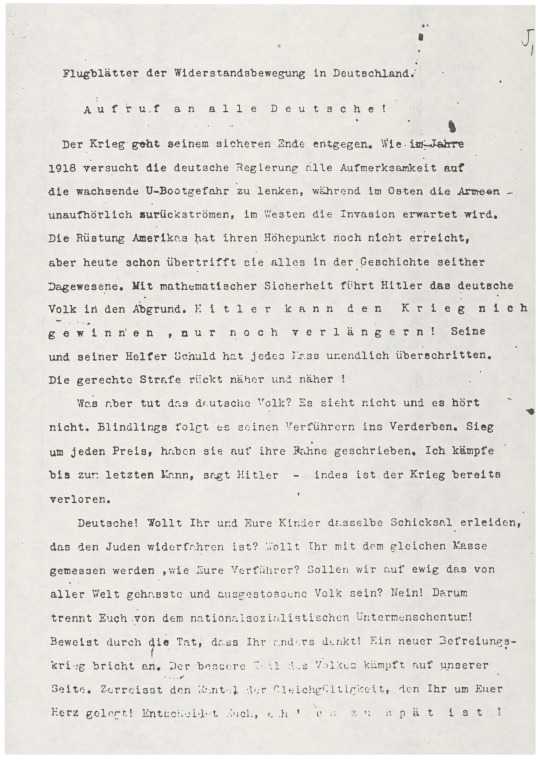

[Weiße Rose], Leaflet of the Resistance, Leaflet #5 [November, 1942 – January, 1943] [Weiße Rose Stiftung e.V., München. United States Holocaust Memorial Museum, Washington, D.C.]
Leaflet of the Resistance, The Fifth Leaflet
«A Call to All Germans!
The war is approaching its destined end. As in the year 1918, the German government is trying to focus attention exclusively on the growing threat of submarine warfare, while in the East the armies are constantly in retreat and invasion is imminent in the West. Mobilization in the United States has not yet reached its climax, but already it exceeds anything that the world has ever seen. It has become a mathematical certainty that Hitler is leading the German people into the abyss. Hitler cannot win the war; he can only prolong it. The guilt of Hitler and his minions goes beyond all measure. Retribution comes closer and closer.
But what are the German people doing? They will not see and will not listen. Blindly they follow their seducers into ruin. Victory at any price! is inscribed on their banner. “I will fight to the last man,” says Hitler—but in the meantime the war has already been lost.
Germans! Do you and your children want to suffer the same fate that befell the Jews? Do you want to be judged by the same standards as your traducers? Are we to be forever the nation which is hated and rejected by all mankind? No. Dissociate yourselves from National Socialist gangsterism. Prove by your deeds that you think otherwise. A new war of liberation is about to begin. The better part of the nation will fight on our side. Cast off the cloak of indifference you have wrapped around you. Make the decision before it is too late! Do not believe the National Socialist propaganda which has driven the fear of Bolshevism into your bones. Do not believe that Germany’s welfare is linked to the victory of National Socialism for good or ill.
A criminal regime cannot achieve a German victory. Separate yourselves in time from everything connected with National Socialism. In the aftermath a terrible but just judgment will be meted out to those who stayed in hiding, who were cowardly and hesitant.
What can we learn from the outcome of this war—this war that never was a national war?
The imperialist ideology of force, from whatever side it comes, must be shattered for all time. A one-sided Prussian militarism must never again be allowed to assume power. Only in large-scale cooperation among the nations of Europe can the ground be prepared for reconstruction. Centralized hegemony, such as the Prussian state has tried to exercise in Germany and in Europe, must be cut down at its inception. The Germany of the future must be a federal state. At this juncture only a sound federal system can imbue a weakened Europe with a new life. The workers must be liberated from their condition of down-trodden slavery under National Socialism. The illusory structure of autonomous national industry must disappear. Every nation and each man have a right to the goods of the whole world!
Freedom of speech, freedom of religion, the protection of individual citizens from the arbitrary will of criminal regimes of violence—these will be the bases of the New Europe.
Support the resistance. Distribute the leaflets!»
– Inge Scholl, (1952), The White Rose. Munich 1942-1943, With an Introduction by Dorothee Sölle, Translated from the German by Arthur R. Schultz, Wesleyan University Press, Middletown, CT, 1983, pp. 89-90
#flyer#pamphlet#weiße rose#book#hans scholl#alexander schmorell#christoph probst#sophie scholl#willi graf#kurt huber#weiße rose stiftung#united states holocaust memorial museum#inge scholl#dorothee sölle#arthur r. schultz#wesleyan university press#1940s#1950s#1980s
9 notes
·
View notes
Text

Data General Eclipse S/120
Large Scale Systems Museum (LSSM) - mact.io - Pittsburgh, PA
777 notes
·
View notes
Text
Hello, comrades.
It is with great pleasure that I want to tell you about my visit to the city of Balakovo, which is known for the fact that one of the 11 nuclear power plants of the Russian Federation - the Balakovo NPP - is based there.
The city of Balakovo is located in the Saratov region, 170 km from one of the major cities of the Volga region – Saratov. Balakovo NPP is located 8 kilometers from the city.
In fact, Balakovo is a unique city in Russia – no other city has three energy producing enterprises at the same time – nuclear power plant, hydroelectric power plant and thermal power plant. It was thanks to the active construction of hydroelectric power plant during the Soviet Union that the city received a powerful industrial, cultural and demographic development. The city became a grandiose All-Union Komsomol construction site, attracting a huge number of students from all over the country.
The city itself is very cozy and green.
So, in 1977, the construction of a nuclear power plant begins near the city…
Initially, it was supposed to be called Privolzhskaya and consist of 6 power units, almost exactly repeating the Zaporozhye NPP in the Ukrainian SSR. The first power unit was supposed to be commissioned in 1984, but due to a number of circumstances, it happened only in 1985. The next 3 blocks were commissioned in 1987, 1988, 1993, respectively, and the construction of the fifth and sixth blocks was frozen in 1992 (no further construction is planned).
So, Balakovo NPP is the acknowledged leader in the Russian nuclear industry by many indicators. At present, the enterprise generates about 30 billion kWh of electricity annually and is the top performer among all nuclear power plants of Russia. The electricity is supplied to consumers in the Volga region, Central Russia, Ural and Siberia.
The plant has been awarded the title of Russia’s Best NPP 17 times and has become a pilot platform where new advanced fuel for VVER-1000 reactors was used on an industrial scale for the first time.
VVER-1000 type reactors with the capacity of 1000 MW are the «heart» of Balakovo NPP.
One of the priority activities of Balakovo NPP is the life extension of the power units. In 2015 the plant obtained a license for the life extension of power unit № 1 for more 30 years, in 2017 – a license for power unit № 2 for 26 years, in 2018 – for power unit №3 for further 30 years of operation. This was preceded by a large-scale upgrade of systems and equipment, including safety systems.
The Information center at the nuclear power plant in the city of Balakovo was created in order to inform plant workers, builders and the public about what is happening at the facility, as well as to form a positive attitude towards nuclear energy (which was especially shaken against the background of the Chernobyl accident). The Center was also engaged in the production of a special newspaper of the NPP called "Energiya" («Energy»), which is still being published (and I am now the owner of a couple of recent issues).

At the entrance to the center, there is a life-size heat-generating assembly - very impressive.

So, there are two museums in the center: on the ground floor there is a newly opened museum dedicated specifically to the Balakovo NPP, its history from the first peg driven into the ground to the present day.

On the second floor there is an older, but no less interesting exposition with many exhibits, including interactive stands, multimedia screens and information stands.
One can find various information about nuclear power plants. There is a stand dedicated to various types of electricity generation.
Mockups dedicated to the fission reaction of uranium nuclei, as well as the entire cycle that uranium goes through, starting with the extraction of uranium ore and ending with the storage of spent nuclear fuel or its further processing.

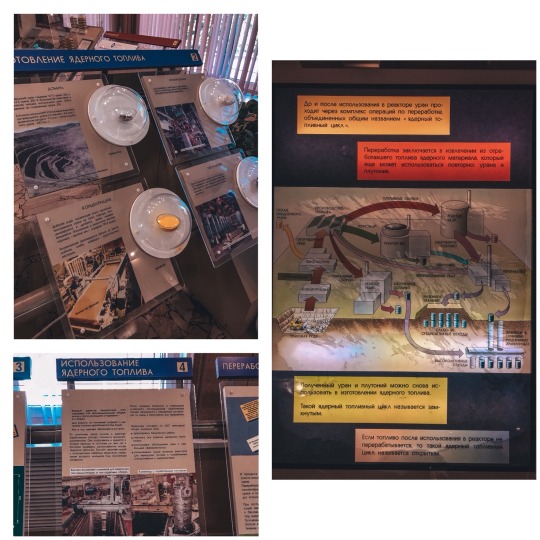
A visual layout of one of the power units with a reactor and a hall with turbines and generators that generate electricity.
The lights are flashing, you can see the movement of heated steam along the contours to the turbines and back.
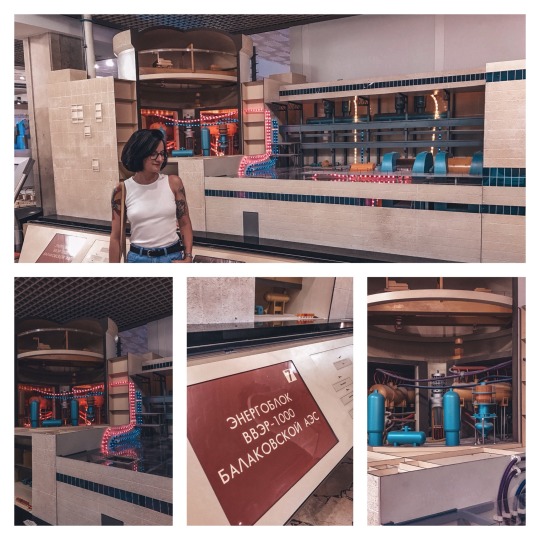
A lot of attention is paid to environmental and radiation safety. You can notice the background radiation indicator (by the way, do you remember this one on the building of the Kurchatov Institute?).
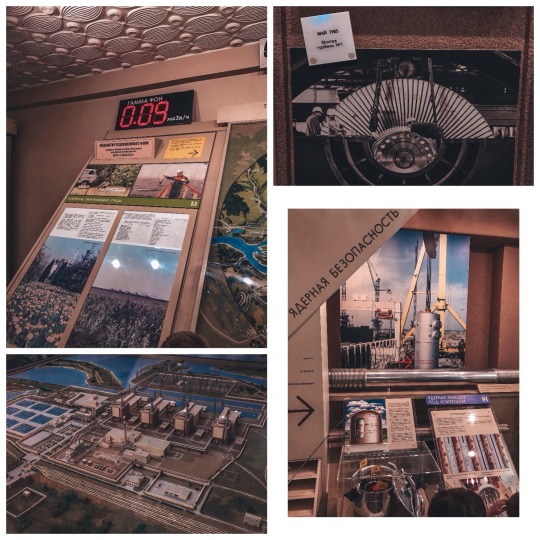
In the center both the points of measurement of radioactive contamination of the human body, familiar to us from old photos of the same Chernobyl, and more modern installations are presented:

Your humble narrator had the honor to go through the measurement in the modern one :)
At the end of our tour, we were shown a wonderful film (in 3D!!) on the detailed design of the VVER-1000 reactor.
Well, after that, we went to look for a way to get as close to the plant as possible, and also to find a place from which the most beautiful view of all 4 power units would open…
We got very close to the plant, and then drove around a huge cooling pond, from the opposite bank of which I took these pictures :)


@elenatria @connihd @legasovas @ignalina-c0re @natasharedfox @lastnightfanfictionsavedmylife @odense @bewareofdragon @johnlockismyreligion @art-is-a-malady @arthoe3105 @arionvulgaris
#nuclear power plant#Balakovo#russia#travel#npp#Balakovo NPP#my picutre#nuclear reactor#nuclear reactors#vver-1000#nuclear energy#atomic energy#atom#uranium#Россия#балаково#балаковская аэс#атомная электростанция#путешествиепороссии#путешествия#атомная энергия#атомная станция#уран#ядерная реакция
30 notes
·
View notes
Text
Leaving our hotel bright and early, we headed on to Fukushima. It was great to see so much of the country side, we even had lunch with a bunch of pink pokemon, with Chansey being the favourite!

We then moved away from pokemon and on to our first proper stop of the day; a sedimentary outcrop. Here we saw how the tephra (tephra is fragments of rock and volcanic glass) from historic volcanic eruptions were cemented into the rock's layers. We could see this in the coarser, darker layers in the rock. These layers can also be dated to find the ages of each of the volcanic eruptions with the right equitment! This can be really handy to understand the historic volcanic activity, which can help to forcast what to expect from future volcanic activity!


We also saw a cute real frog (left) and cute rock frog (right) at the outcrop.
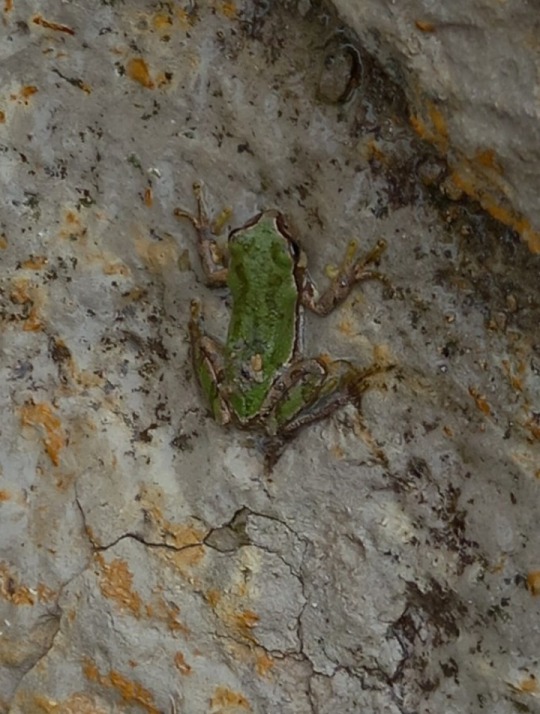
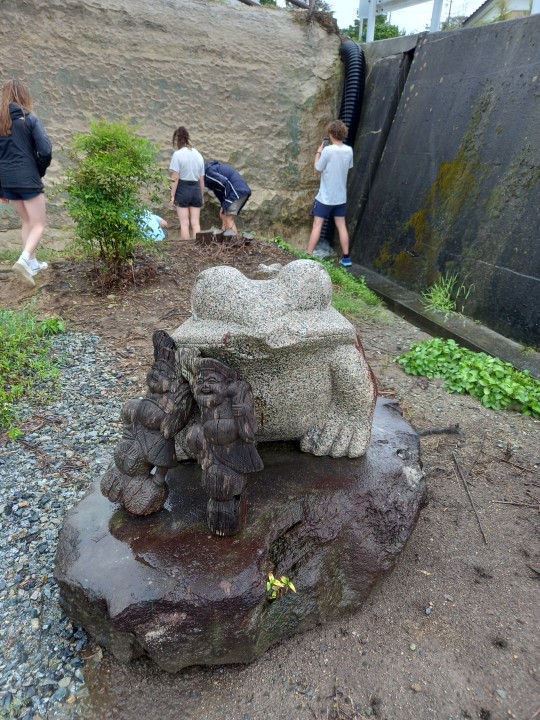
The rock frog was placed there by the 2011 Tohoku tsunami, which had flattened the low lying houses in the area.
The tsunami also impacted the Fukushima Daiichi Nuclear Power Plant, who's cooling system later failed, causing an explosion and the spread of radioactive particles into the atmosphere. The Fukushima Disaster museum captured the sheer magnitude of the affects that the compound disaster had on the people in the area, and the sheer force behind the tsunami.

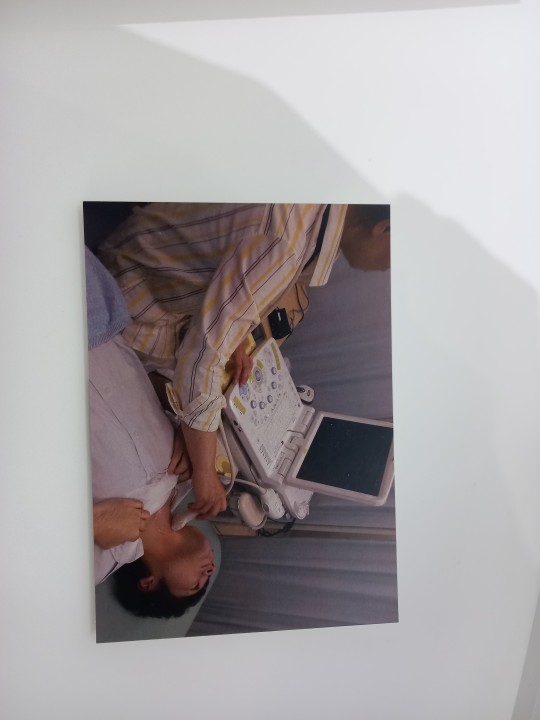

This also really made me think about the similarities between the Tohoku 2011 disaster and the black summer bushfires in Australia - Tohoku's scale and impact was so unimaginably large, but both have lasting impacts; even if Australia's has been shorter and hasn't had to worry about nuclear radiation. While driving through places that had been affected by the tsunami, the missing buildings and blank plots of land really felt very close to what we still see in some places in Australia, for me Cobargo's main street came to straight to mind when I saw them.
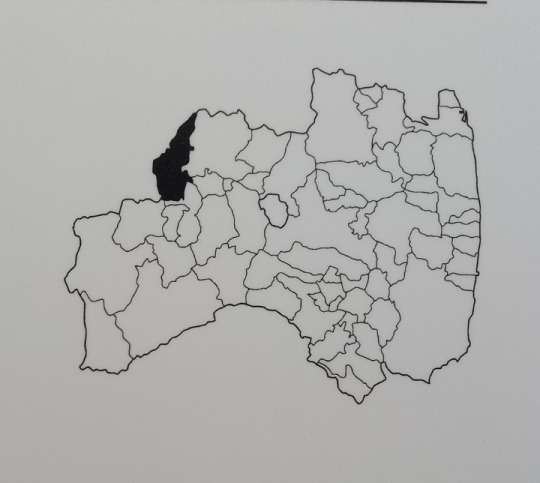

It was a really tragic place, but seeing their slow recovery highlighted the area's resiliency, to even something of this magnitude.
2 notes
·
View notes
Text


youtube
Breathtaking panoramic views of the Aegean Sea and Peloponnese await you at this private island oasis designed and curated by Alpha Industries founder Miles Bron. Sleek architecture and sophisticated design with an equal eye toward nature and extravagance provide an unparalleled luxury living experience accessible only by boat and crowned by a Glass Onion atrium – an architectural triumph and one-of-a-kind piece-de-resistance adorning the main residence soaring 20 meters high.
This private commune is the perfect retreat for groups of friends, families and enemies alike with the property boasting seven private studio villas – each inspired by a different chakra, six pools, a state of the art gym featuring on call private training sessions, lavish gardens and a multitude of entertaining spaces including a sunken living room and massive dining area perfect for hosting the most elaborate of murder mystery parties.
Large scale sculptures adorn the grounds, and the owners’ carefully curated and commissioned selection of high-end art including works by Banksy and Francis Bacon make this a truly priceless acquisition.
Powered with clean energy and brimming with opulence and intrigue, don’t miss this one of a kind opportunity to own a masterpiece of elegant indoor-outdoor living and true commune for creativity. The Glass Onion is sure to be the full reclamation of everything you’ve achieved.
Interior Details
State-of-the art gym
Wood and Marble Flooring
Six levels or more
Glass Atrium
Smart Home
Bespoke Hourly Time Keeper
Green Energy Power
Media Room
Spa
Wine Cellar
Custom Furnishings and Frescoes
Priceless Works of Art
Museum-Grade Security System
Appliances
Barbeque
Dishwasher
Dryer
Disposal
Freezer
Microwave
Range/Oven
Refrigerator
Robotic Butler
Washer
Exterior Details
7 private studio villas each with en-suite
6 pools
Private beach with one of a kind glass pier
Panoramic Views
Ocean Views
6 notes
·
View notes
Text

SPECIAL: First open gates of Edwards Air Base in 13 years
Bernardo Malfitano By Bernardo Malfitano 11/14/2022 - 9:45 pm in Air Shows, Special, Military
Certain places around the world have superlative importance to the history of aviation. The Bagatelle field, the dunes of Kitty Hawk, the English Channel... Certain airfields in cities such as Toulouse or Seattle or Zhukovsky... These places are associated by aviation lovers with a historical moment, or to several through the decades. At the top of this list is the Edwards Air Force Base.
The bed of a dry lake, Rogers Dry Lake, is effectively a gigantic runway where planes can take off and land in any direction. Because of this, the US Air Force - at the time when it was still US Army Air Corps - created an air base at this site for training and testing new weapons and planes. Between 1945 and 1960, new technologies allowed an explosion in aircraft performance, with records of altitude and speed being broken on average once every two years.

The Rogers Dry Lake, surrounded by 50 km of desert, was the ideal place to minimize the risks associated with these high-performance experimental flights... also because it is an hour from Los Angeles, that is, from the headquarters of several giants of the aeronautical industry at that time: North American, Douglas, Lockheed, and Northrop. Therefore, since the sound barrier was broken in 1947, new military prototypes and experimental aircraft from NASA have been making their first flights - and continue to break records - in Edwards. Almost looking like a science fiction film, Edwards is a "bubble in time and space" where aerospace technology is always twenty years ahead of the rest of the world. Visiting Edwards is visiting the future of aviation.

Stratolaunch aircraft seen from the highway that leads to Edwards.
Soon, articles at CAVOK will cover more details about the history of the base - such as the long list of planes that made their first flight in Edwards, speed and altitude records, and new aeronautical technologies such as fringed wings, jet engines, winglets, fly-by-wire, electric and solar propulsion and hydrogen, supersonic flight without "boom"... - and about important Today, we will talk about a rare opportunity: On the weekend following October 14, 2022, marking the 75th anniversary of the first supersonic flight, the Edwards air base opened its gates to the public for the first time in 13 years.

In Edwards, even parking is interesting. At the beginning of each day of the airshow, fifty thousand people parked their cars in the historic Rogers Dry Lake.

Entering the "static displays" area, the public had access to several unique planes, many still operational and some brought from the Flight Test Museum. Northrop Grumman brought its L-1011 Stargazer, used to launch Pegasus rockets, the last L-1011 that still flies. Scaled Composites - based in Mojave, near Edwards - was present with the prototype of the Firebird, an "optionally manned" plane optimized for HALE (high altitude, long endurance) missions.
FireBird from Scaled Composites.
Stratolaunch is also in Mojave (from the road that leads to Edwards, it was possible to clearly see the "Roc", the largest plane in the world) and exhibited a mock-up of being a hypersonic plane, the Talon. Among other jets, NASA demonstrated its 747SP "Sofia" (Stratospheric Observatory For Infrared Astronomy), equipped with a huge telescope... and also smaller planes, such as a T-34 and (to the pride of the Brazilians present at the event) a Ximango motorplane.
Ximango from the Brazilian Aeromot, seen at Edwards Air Base.
Also present was the X-62 of the USAF Test Pilot School, a modified F-16 with control systems that simulate the flight characteristics of other planes; that is, a "flying flight simulator". The Test Pilot School teaches how to fly and evaluate various planes, so it has an eclectic collection that includes, for example, an Antonov An-2, a large biplane that attracted attention between much more modern jets.
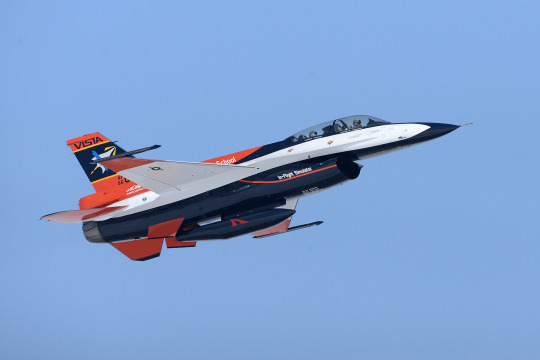
The Flight Test Museum contributed the F-16XL - elongated and modified with hang wings to increase the range and ability to carry bombs and missiles - and an SR-71 Blackbird. All this in addition to an extensive amount of military jets: B-1, B-52, F-18 (NASA flies genuine "F-18", the original prototypes, manufactured before the name is changed to "F/A-18"), F-22, F-35 (of all three models), KC-46, A330 Tanker, etc.


And what most attracted the public's attention: The fictional DarkStar, a mock-up made by Lockheed for the filming of "Top Gun: Maverick". Although it is not a "real" plane, the DarkStar was created by Skunk Works (also located near Edwards, in Palmdale) to realistically represent the design of an airplane made for extreme speeds; It is practically identical to "SR-72", a concept published by Lockheed Skunk Works a few years ago.

The airshow began with something rare - a "sonic boom", created by an F-22 flying high above the base. With the exception of the oceans, there are very few areas where it is possible for a pilot to receive permission to fly above the speed of sound, and one of them is a "runner" above Edwards.
Soon after, the official opening was the traditional American airshows: Paratroopers jumped from a C-17, carrying the flag of the state of California, several military flags, and a huge American flag, while the American national anthem was sung. The paratroopers landed and walked to the spectators, answering questions and explaining the details of this form of flight and ground combat.
The first "act" of the airshow was a simulated battle. An F-22 and an F-35 arrived to "attack the enemy base", which was being protected by two F-16s. The two modern fighters alternated between air combat against the F-16s and the launch of simulated bombs, with the right to pyrotechnic effects. They also demonstrated an air refuelling, with a KC-135.
youtube
A B-1 then entered the scene, with a simulated bombing that included a "wall of fire"... and to conclude with another element "only in Edwards", made a pass at high speed and rolled 360 degrees (!!!) before returning to the ground.
Several NASA planes were then demonstrated, another moment "only in Edwards". The 747SP "Sofia" made its last flight before being retired; Its infrared telescope, used at altitudes above 99% of the humidity of the atmosphere (water blocks infrared light), was recently surpassed by the James Webb space telescope.
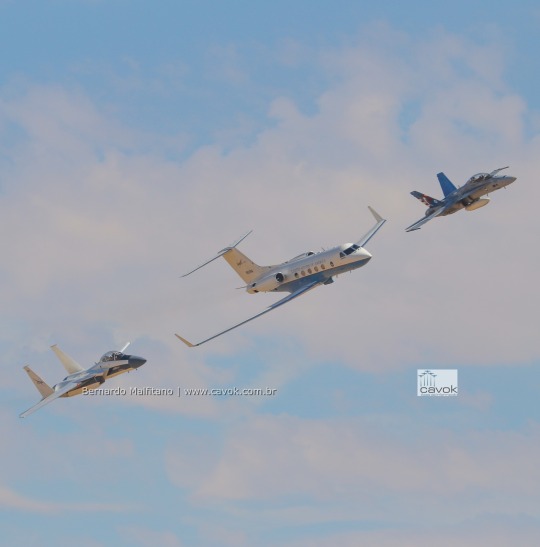
An F-15, an F-18, and a C-20 (Gulfstream 3), made several passes at graduation, and then individually. NASA uses Gulfstream for various missions: VIP transportation, pilot training (including at the time of the Space Shuttle, when astronauts simulated the landing of the Shuttle using Gulfstream), and scientific research such as the use of flexible flaps and fairings on the retractable landing gear to reduce noise during landing. (In modern transport planes, most of the noise during landing comes from the aerodynamics around the flaps and landing gear, not the engines). The F-15 and F-18 are used as "chase" ("chara", following flight tests) and also as "guinea pigs" in research projects. For example: The sonic bang is much less intense when the wings of the plane generate less than 1g (the weight of the plane) of support.
The F-15 and F-18 demonstrated this: They climbed a few km and flew above the base at supersonic speed: The F-15 in a straight line, but the F-18 performing parabolic ascents and descents, planned so that the sonic bang heard by the spectators was generated during the "push over" of less than 1g when the ascent becomes a descent The sonic bang of the F-18 was, in fact, much less intense than that of the F-15: The F-15 one reminded fireworks, while the F-18 diving looked like a car door closing. (The X-59, which will soon make its first flight, has an aerodynamic shape that theoretically should generate an even less intense bang. By the way: It was a shame that Lockheed did not bring the X-59 to the event, especially since the plane is at Skunk Works in Palmdale, less than half an hour from Edwards... It's for the next one.)
A number of civilian pilots exhibited the acrobatic capacity of several historical military planes. Vicki Benzing made graceful loops on her beautiful PT-17 Stearman; John Collver executed rolls on a SNJ ( naval T-6) including one where the landing gear was extended while the plane was inverted.
Ken Gottschall demonstrated why the P-51 was one of the most agile fighters of World War II; And Greg Colyer recalled that the P-80/T-33 - the first aircraft created by Lockheed Skunk Works, tested here over the Mojave Desert in the late 1940s - was the fastest plane in the world in the summer of 1947 (a record that did not last long
More intense stunts were demonstrated by Chuck Coleman in without Extra 300L and Rob Holland in his MXS. Coleman is an engineer and pilot at Scaled Composites, helping to create and test some of the most modern and innovative aircraft of recent decades, such as the BD-10, Proteus, and GlobalFlyer. Holland is literally the best acrobatic driver in the United States, Freestyle champion in the World Aerobatic Championship, gold medal in Freestyle at the World Air Games, the only driver to win the U.S. National Aerobatic Championship ten times in a row... Maneuvers such as tumbles and lomcevaks are simply impossible on most planes - even acrobatic planes - and for most pilots. Spectators watching Holland and Coleman literally said "I didn't know a plane could do that."
Bob Carlton then piloted a very unusual motor glider; an H-101 "Jump" with a small jet engine! The engine allows the glider to take off and climb without having to be towed... and creates a very strange sound, almost never associated with this type of aircraft. This type of flight is not only for airshows: It is an essential resource for training amateur jet pilots. In the United States, the FAA requires a Type Rating - that is, training and testing on the same airplane model - for any jet, including small planes such as the BD-5J and SubSonex, which have only one seat and are kits assembled by amateurs. For those who want to assemble and pilot their own mini-jet, how would it be possible to get a Type Rating? The answer: Carlton installed a PBS-TJ100 - the same engine used in the SubSonex and modern versions of the BD-5J - on a two-seat TST-14 motorplane. He coordinated with the FAA to create a training program: Pilots flying with Carlton in the TST-14 jet receive approval from the FAA to pilot their BD-5Js and SubSonex. It is a creative and interesting solution for a regulation written before the era of small and simple jets.
And speaking of amateur-made aircraft, assembled with kits, the most popular are the RVs, from Van's Aircraft. (I write this from a perhaps not perfectly objective perspective, being a RV pilot and engineer at Van's. Personally, I think RVs are more fun than any other plane, combining speed and stunts with the ability to land on short and non-paved lanes. Objectively, it is undeniable that RVs dominate the "homebuilts" market: On average, once a day, a new RV somewhere in the world makes its first flight. The number of new RVs per year almost equals the sum of all other popular kits: Sonex, Rans, Zenith, Glasair, Sling, Kitfox, etc.). P
RV ilotos love to fly in graduation, forming groups around the United States that offer training and coordinate fly-overs of dozens of planes on events such as American football games and car racing. In Oshkosh, fifty RVs flew together, forming a huge "50" in the sky to celebrate the company's fifty years, coordinated by one of these groups. Some of the "50" pilots live in Southern California and are part of the Dawn Patrol group - which has this name because they prefer to fly during sunrise, when the air usually has less turbulence. Dawn Patrol flies its RVs at several airshows throughout California, including Edwards.
The last demonstration of the day was that of the Thunderbirds, the US Air Force's air demonstration squad. They piloted their six F-16s in precise and carefully coordinated graduations, through extreme maneuvers, vertical ascents, fast rolls, kilometers high loops, and "opposing passes" where one jet flies towards the other with a relative speed of almost 2000 km/h.
During most of the flight, the Thunderbirds number 1 to 4 flew together forming the "diamond", while pilots 5 and 6 (the "solos") flew alone or in opposition, demonstrating more dynamic maneuvers. At certain points, all six came together flying in "delta". One of the most impressive parts of the airshow was the Thunderbirds "forming up" and separating, occasionally "fffing the sky" with planes and lines of smoke in various directions.
Twice, they surprised the audience with "sneak passes", where the "diamond" performs a maneuver to the right, and one of the "solos" comes behind and on the left side, almost at the speed of sound, unexpectedly. The viewer not only hears the "stow" of the aferburners; he also feels on his chest. The power and agility of the F-16, and the skill of the pilots, are spectacular.
Historical aircraft, almost impossible stunts, amateur construction single engines and a jet plane, planes used by NASA in scientific research, a simulated attack with explosions and planes of all sizes, and one of the best military aerial demonstration teams, all flying in one of the most important places in the history of aeronautical technology.
The Edwards Airshow & Open House is one of the most special air events in the United States. Aviation fans are crossing their fingers so that it is no longer 13 years until the next one!
Tags: AirshowMilitary AviationUSAF - United States Air Force / US Air Force
Previous news
Boeing concerned about Indonesia's ability to pay for the F-15EX
Next news
U.S. Space Force X-37B test vehicle lands after a record 908 days in orbit
Bernardo Malfitano
Bernardo Malfitano
Related news
Premium Aerotec completed and delivered the first central part of the hull to a Eurofighter of the Quadriga contract. (Photo: Premium AEROTEC/Jost G. Thorau)
MILITARY
First centerpiece of the fuselage delivered to the "Quadriga" Eurofighter
15/11/2022 - 14:00
MILITARY
IMAGES: Airbus retires its oldest A400M
15/11/2022 - 12:22
Three F-35i "Adir" aircraft on their arrival at Nevatim Air Base in Israel on Sunday, November 13, 2022. (Photo: Israel Defense Forces)
MILITARY
IMAGES: Israel receives three more F-35I Adir fighters
15/11/2022 - 11:34
MILITARY
Ukrainians turn a Russian Su-30SM hunted into souvenir keychains
14/11/2022 - 21:32
MILITARY
Czech Air Force acquires new L-39NG jet training fleet
14/11/2022 - 20:36
The Gamebird GB1 aircraft inside the warehouse of the Padre Hurtado Seminar school in Chillán. (Photo: Twitter @ICEBiobio)
AIR ACCIDENTS
Accident with Gamebird GB1 of the FACh Falcons
14/11/2022 - 17:22
home Main Page Editorials INFORMATION events Cooperate Specialities advertise about
Cavok Brazil - Digital Tchê Web Creation
SORRY TUMBLRS STUPID 10 PICTURE LIMIT.
Commercial
Executive
Helicopters
HISTORY
Military
Brazilian Air Force
Space
Specialities
Cavok Brazil - Digital Tchê Web Creation
11 notes
·
View notes
Text
Character Intro: Thespios (Kingdom of Ichor)
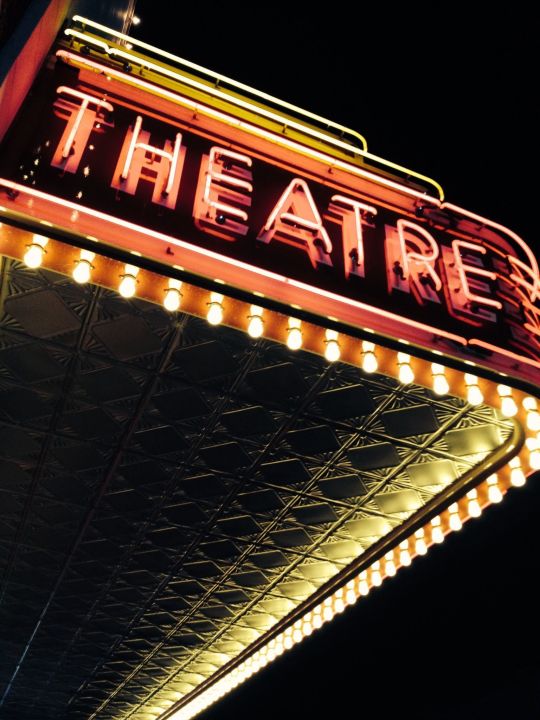
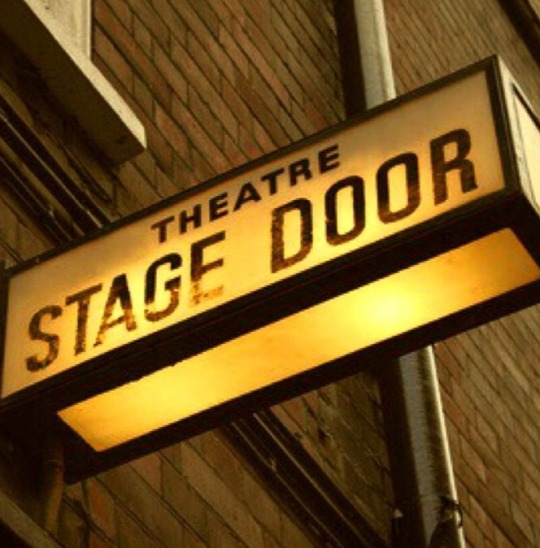







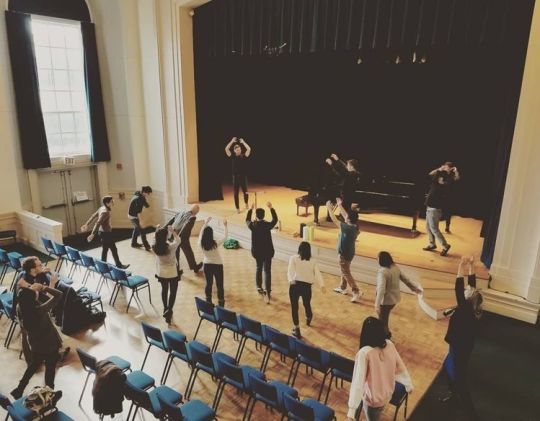




Nicknames- Casanova jr. by the others
Showstopper by his father
The Moronic Wonder by Aggie
Age- 13 (immortal)
Location- Mania district, New Olympus
Personality- With a great respect for the performing arts, he loves garnering attention. He can be quite conceited & manipulative while having a complete disregard for conformative rules and authority. He's smart, observant, & quite cultured for someone his age.
He has the standard abilities of a god. As the god of acting his other powers and abilities include limited invsibility, limited shapeshifting (can transform himself into other people & characters for only 10 minutes), vocal projection, stage light manipulation, having an eidetic memory (can remember scenes from movies and TV shows, lines, & scripts), and limited illusion creation.
Thespios is the only child to his father Matikós (god of performance). They live on the top floor of The Tauros Building, a luxury high-rise apartment building in the Mania neighborhood of New Olympus. His bedroom is every theater kid's dream! It has a theather aesthetic with a semi-circle for the "mini amphitheater" that has a few rich red velvet seats for company along with a HUGE king sized bed covered in velvet & satin sheets and pillows with a bedframe resembling a stage. Instead of a TV there's a projector screen and instead of traditional lighting there's stage lights & neon light fixtures. On the walls there's posters of his favorite movies, TV shows, bands, and deities. He owns the latest Talos Core gaming system as well as an antique typewriter (which Thespios bought on oBay). He has one pet- a she-dragon named Ravenshade who has frost blue eyes & blue-black and deep fuchsia scales. She's his usual mode for transportation to school.
Thespios has a great relationship with his father. He appreciates the fact that his dad never stifled his creativity or interests. They both constantly frequent the museums, cinema, & opera with a favorite pasttime of theirs being riding dragonback! Thespios knows that he's not the only kid in the pantheon to be raised by a single parent, but he doesn't feel like he's "missing" out by not having another parent.
He's well aware of the events surrounding his conception- his birth mother (a maenad) being a surrogate for his father. Thespios recently met her with the two of them keeping in contact through e-mail every once in a while. There are even talks for Thespios to spend his next school vacation in Thebes where she lives.
His wardrobe consists of suede and leather shoes, leather jeans, regular jeans, polos, mink scarves, berets, sweaters, & leather jackets with black being a major color!
His father gifted him a gold & silver theater masks necklace which Thespios always wears.
A go-to drink for him is coffee. He LOVES coffee! Thespios is a pro when it comes to his father's espresso machine in their kitchen. He also likes pomegranate cola, lime flavored sparkling water, club soda, and chocolate espresso milkshakes from The Frozen Spoon. Usuals for him from The Roasted Bean includes cafe au laits, a medium pomegranate dragonfruit splash, & a large iced mocha.
Thespios has many talents. In addition to inheriting remarkable flexibility from his father he can also play the lyre, trumpet, and saxophone & he's also a pretty good drawer- mainly focusing on self portraits.
He has a few stamps on his passport, traveling to the other realms a few times! His favorite trip so far has been to the Underworld where he was at the film premier of Blooddancer! He even saved the ticket stubs in a scrapbook.
His favorite snacks include pomegranate flavored licorice twists, salt & vinegar potato chips, caramel olive oil popcorn, and red hot cinnamon jawbreakers.
Thespios is currently on break from school. As far as the godly kids, he sometimes hangs out with Deucalion (Deuce) and Thrasos (god of boldness, insolence, recklessness, & courage). Thespios admires the "bad-assery" of Anaideia (goddess of ruthlessness, shamelessness, & unforgiveness). He doesn't know too much about the "Drool Crew" (the kids of The Litae) except a time where Epidotes (god of purity) was partnered up with him for a project in their home economics class. Thespios' main friend group are some classmates in his drama class- a lampade named Blakelyn, twin Harpy brothers named Arnim & Aerion, a mermaid named Andrina, and a satyr named Kristanos. They are also part of the school's drama club. Thespios thinks that his drama teacher (a Centaur) Mr. Paspatis is a "mad genius." One student he doesn't seem to care about is Calocagathia (Aggie) (goddess of nobility & goodness). Thespios finds her "know-it-all perfect goody two-shoes" veneer to be offputting. He has only told Blakelyn what happened between the two of them afterschool months ago.
His go-to thing from The Bread Box is the blackberry goat cheese salad.
He's fluent in Old Greek, Latin, & French.
Thespios had his first kiss with Andrina at Kristanos' spin the bottle party a couple weeks ago. They still sometimes make out when they do homework together.
In the pantheon he really looks up to and admires The Muses (calls Melpomene "literal perfection"), Apollo (a favorite album of his being 1,000 Days of Sunlight), and the "mad" god Dionysus (secretly hopes that he'll be his mentor)! Thespios also likes hanging out with his noná, Felis (Titaness of cats). He has quite the number of crushes! Aside from Melpomene (muse of tragedy), he thinks that Aphrodite (goddess of love & beauty), Polyhymnia (muse of hymns), Ailuros (goddess of cats & warfare), and Adephagia (goddess of gluttony) are "total babes." There has uncomfortably been more than one "wet dream."
Two of his favorite desserts are the pain au chocolat and almond souffle. He gets them at Salon du Sucre. Thespios also likes the tiramisu cake from Hollyhock's Bakery.
He has a varied musical palate. Thespios listens to everything from M9, Apollo, Eclipse, Discordic Harmony to Death Theater, Eurydice, O, & the punk rock band Dissonance Machine. Lately he's been a fan of Orpheus, even getting a vinyl copy of his live album Immortalis Amor: Cello Concerto.
He's fond of collecting movie soundtracks, the latest addition being Blooddancer.
A guilty pleasure of his are samurai sushi rolls.
In his free time Thespios loves going to the cinema to catch the latest release! He also enjoys basketball, football (soccer), playing video games, laser tag, reading (is a fan of the god Favian's books), writing (journaling & his own poetry and screenplays), listening to music, and hanging out with friends.
His favorite meals are his dad's feijoada with yellow rice and keftedes.
"Theater is the art of looking at ourselves."
#my oc#original character#my original oc#oc character#my character#my oc character#oc intro#character intro#oc introduction#character introduction#modern greek mythology#modern greek gods#greek myth retellings#greek gods#greek mythology
5 notes
·
View notes